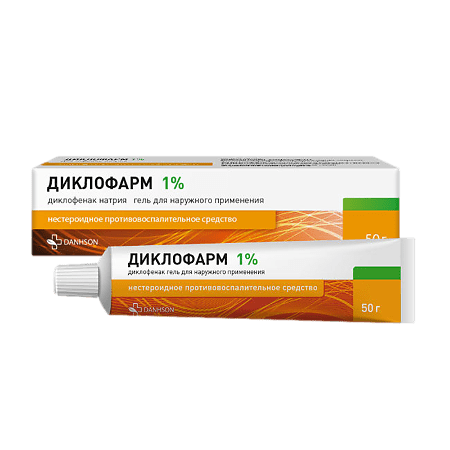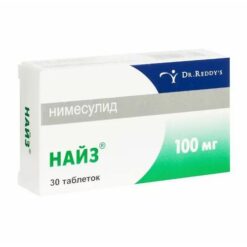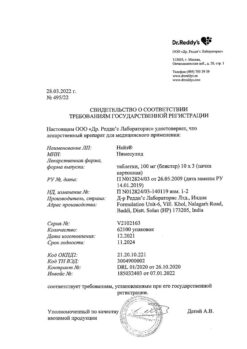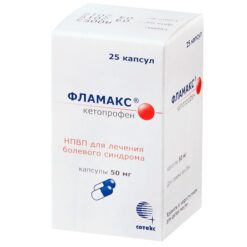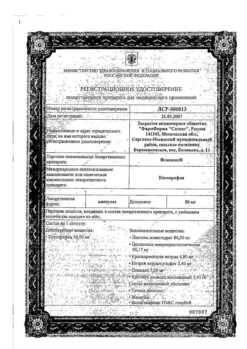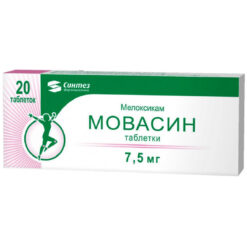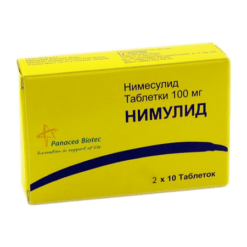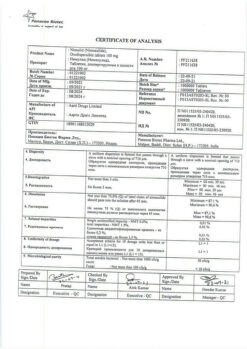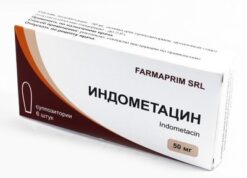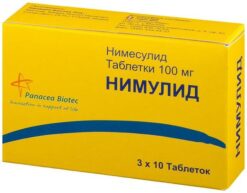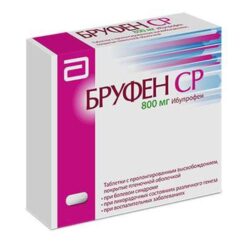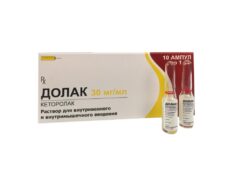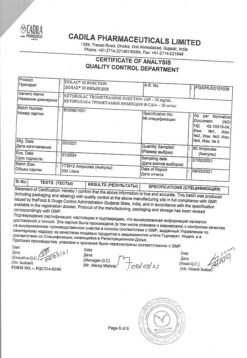No products in the cart.
Diclofarm, gel 1% 50 g
€8.42 €7.02
Description Pharmacokinetics:
Diclofenac is a non-steroidal anti-inflammatory drug (NSAID), a derivative of phenylacetic acid, which has pronounced anti-inflammatory, analgesic and antipyretic effects.
Inhibiting cyclooxygenase 1 (COX1) and cyclooxygenase 2 (COX2) indiscriminately, it disrupts arachidonic acid metabolism and decreases quantity of prostaglandins in inflammation focus, which are the main link in development of inflammation.
It is used to eliminate pain and inflammation in joints, muscles and ligaments of traumatic or rheumatic origin, reducing pain and swelling associated with inflammation and increasing joint mobility.
Absorption
The amount of diclofenac absorbed through the skin is proportional to the area treated and depends on both the total dose applied and the degree of hydration of the skin.
The relative bioavailability of the drug (AUC ratio) at day 7 is 4.5% (for the equivalent dose of diclofenac sodium salt). There was no change in absorption when a moisture-permeable dressing was worn.
The concentration of diclofenac in plasma, synovial membrane and synovial fluid was measured when the drug was applied to the affected joint area: the maximum concentration (Cmax) in plasma was approximately 100 times lower than after oral administration of the same amount of diclofenac.
Distribution
99.7% of diclofenac is bound to plasma proteins, mainly to albumin (99.4%). Diclofenac is mainly distributed and retained in the tissues subject to inflammation, such as joints, where its concentration is 20 times higher than in plasma.
Metabolism
The metabolism of diclofenac is carried out partly by glucuronidation of the unchanged molecule, but mainly by single and multiple hydroxylation, which leads to the formation of several phenolic metabolites, most of which are converted to glucuronide conjugates. Two phenolic metabolites are biologically active, but to a much lesser extent than diclofenac.
Elimination
The total systemic plasma clearance of diclofenac is 263±56 ml/min. Most of diclofenac and its metabolites are excreted by the kidneys. Terminal elimination half-life (T1/2) is 1-2 hours. T1/2 of metabolites, including two pharmacologically active ones, is also short and is 1-3 hours. One of the metabolites (3′-hydroxy-4′-methoxydiclofenac) has a longer elimination half-life, but this metabolite is inactive.
.
Indications
Indications
– Back pain in inflammatory and degenerative diseases of the spine (radiculitis, osteoarthritis, lumbago, sciatica);
– pain in the joints (finger joints, knee joints, etc.).
– pain in the muscles (due to sprains, strains, bruises, injuries);
Inflammation and swelling of soft tissues and joints due to injuries and rheumatic diseases (tendovaginitis, bursitis, periarticular tissue lesions, wrist syndrome).
The drug is intended for symptomatic therapy, reduction of pain and inflammation at the time of use. It has no effect on the progression of the disease.
Active ingredient
Active ingredient
Composition
Composition
Per 1 g of the drug:
the active ingredient:
diclofenac sodium – 10 mg;
excipients:
carbomer – 15 mg,
ethanol (96%) – 150 mg,
isopropanol – 150 mg,
trolamine – 30 mg,
methyl parahydroxybenzoate – 1 mg,
water – 644 mg.
Interaction
Interaction
Diclofenac may increase the effect of drugs that cause photosensitization.
Clinically significant interaction with other drugs has not been described.
Directions for use
Directions for use
The gel is applied externally.
Adults and children over 12 years of age apply a thin layer of the product to the skin over the area of inflammation/injury 2-3 times a day, rubbing lightly into the skin.
The amount of product needed depends on the size of the painful area.
A single dose of the drug, 2-4 g (which by its volume is comparable to the size of a cherry or a walnut, respectively) is enough to treat an area of 400-800 cm2. If the hands are not the localized area of pain, they should be washed after applying the drug.
The duration of treatment depends on the indication and the observed effect. The drug should not be used for more than 14 days without a doctor’s recommendation. If after 7 days of use therapeutic effect is not observed or the condition worsens, you should see a doctor.
Diclofarm should be used in the lowest effective dose with the shortest possible course.
Special Instructions
Special Instructions
The drug Diclofarm should be applied only to intact skin, avoiding contact with open wounds. Avoid contact of the drug with the mouth, eyes and mucous membranes. After application of the drug a bandage may be applied, but airtight occlusive dressings should not be applied.
If a skin rash develops after application of the drug, its use should be discontinued.
It does not affect the ability to operate vehicles, machinery or other activities requiring increased concentration.
Contraindications
Contraindications
– Hypersensitivity to diclofenac or other components of the drug;
– susceptibility to bronchial asthma attacks, skin rashes or acute rhinitis when using acetylsalicylic acid or other NSAIDs;
– violation of the integrity of the skin in the intended place of application;
– pregnancy (III trimester);
– breastfeeding period;
– childhood (under 12 years).
Hepatic porphyria (exacerbation); erosive-ulcerative lesions of the gastrointestinal tract; severe liver and renal function disorders; blood clotting disorders (including.including hemophilia, prolongation of bleeding time, tendency to bleeding); chronic heart failure; bronchial asthma; advanced age; pregnancy (I and II trimester).
Side effects
Side effects
Unwanted reactions are mainly characterized by moderate and transient skin manifestations at the application site of the gel. In very rare cases, allergic reactions are possible.
The incidence of side effects is determined according to the classifications of the World Health Organization: very frequently more than 1/10; frequently more than 1/100 but less than 1/10; infrequently more than 1/1000 but less than 1/100; rarely more than 1/10000 but less than 1/1000; very rarely less than 1/10000.
Immune system disorders
Very rare – hypersensitivity reactions (including urticaria), angioedema.
Respiratory system and thoracic and mediastinal organs
Very rare – episodes of choking, bronchospasm.
Skin and subcutaneous tissue disorders
Often – erythema, dermatitis (including Contact dermatitis), eczema, skin rash, itching;
seldom: bullous dermatitis;
very rarely – photosensitization reactions, pustular rash.
Overdose
Overdose
Because of the low systemic absorption in topical application of the gel, overdose is unlikely.
Symptoms: Inadvertent ingestion may cause systemic adverse reactions.
Treatment: gastric lavage, induction of vomiting, activated charcoal, symptomatic therapy. Hemodialysis is ineffective due to high degree of binding of diclofenac with blood plasma proteins (about 99%).
Similarities
Similarities
Additional information
| Weight | 0.068 kg |
|---|---|
| Manufacturer | VetProm AD, Bulgaria |
| Medication form | gel for external use |
| Brand | VetProm AD |
Related products
Buy Diclofarm, gel 1% 50 g with delivery to USA, UK, Europe and over 120 other countries.

